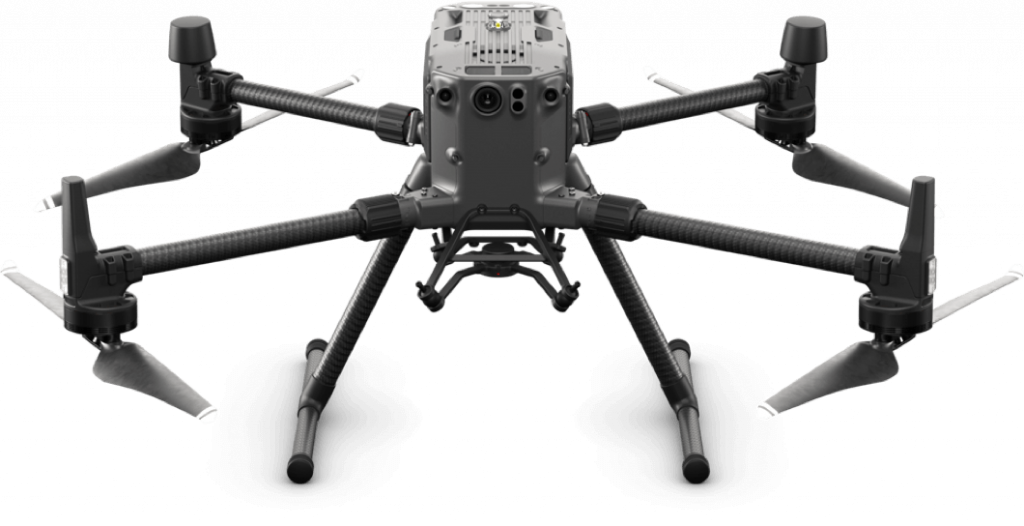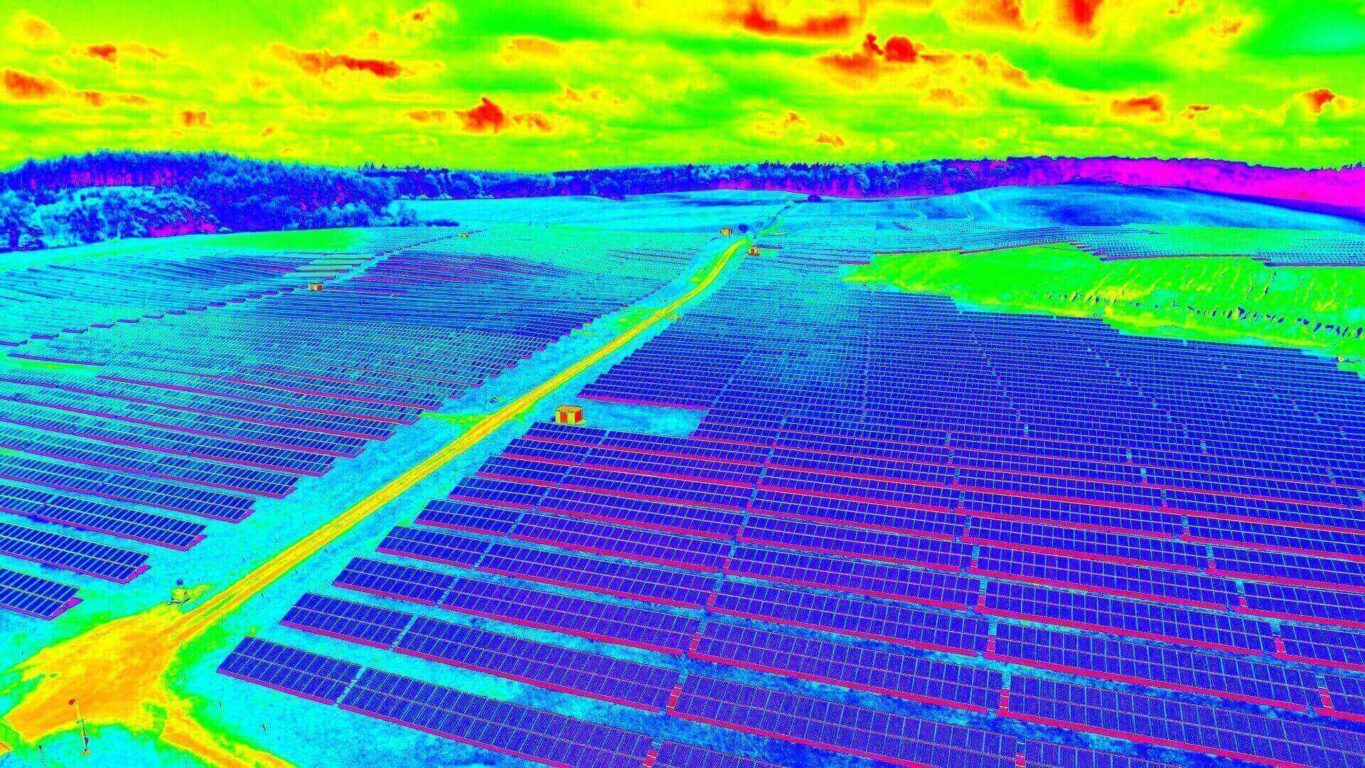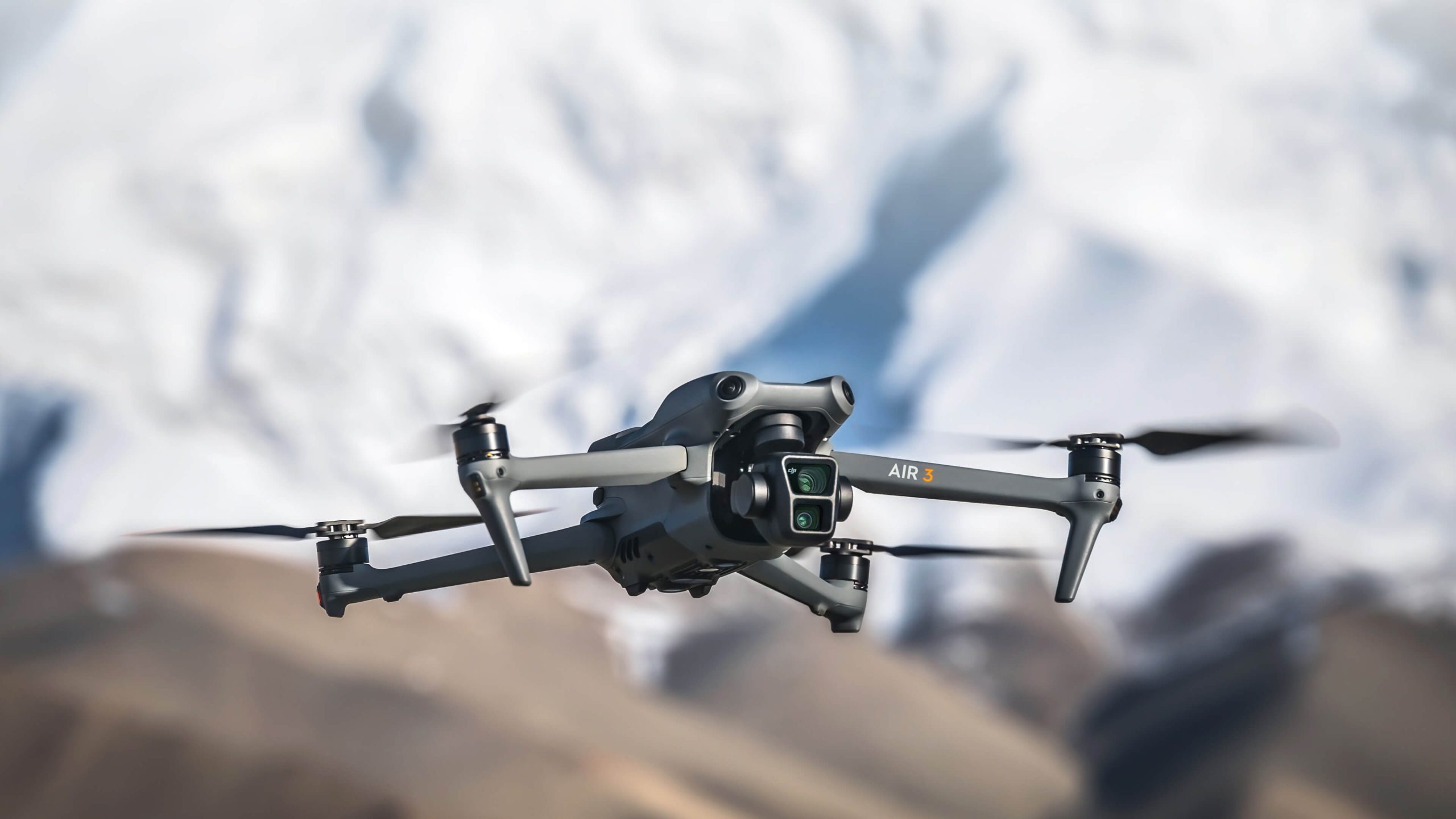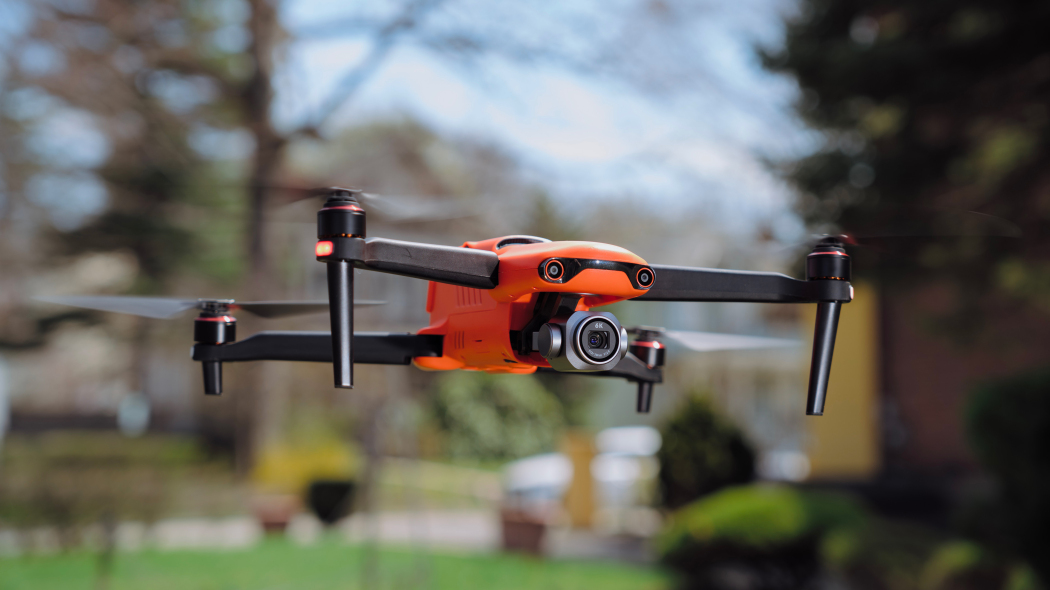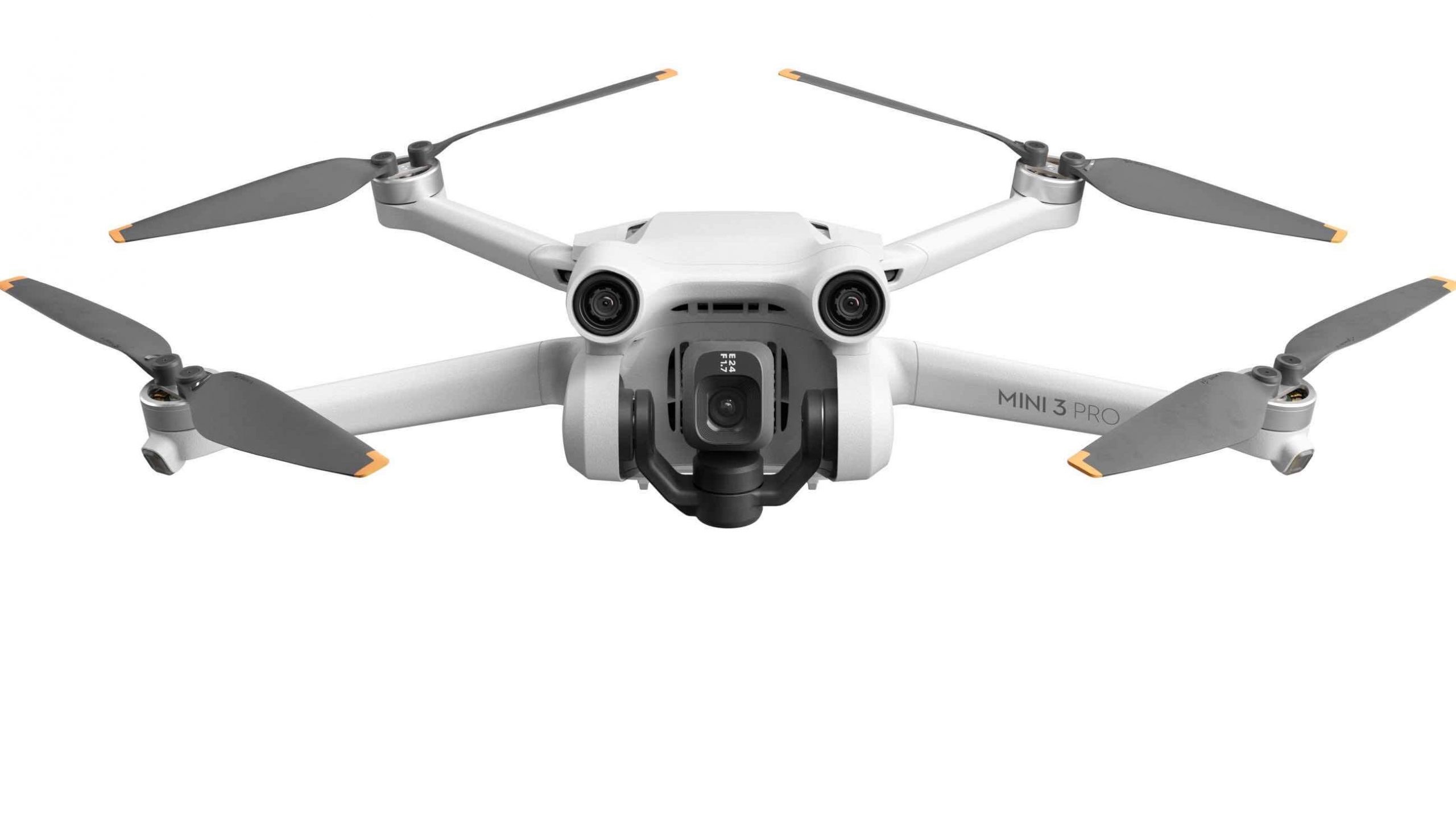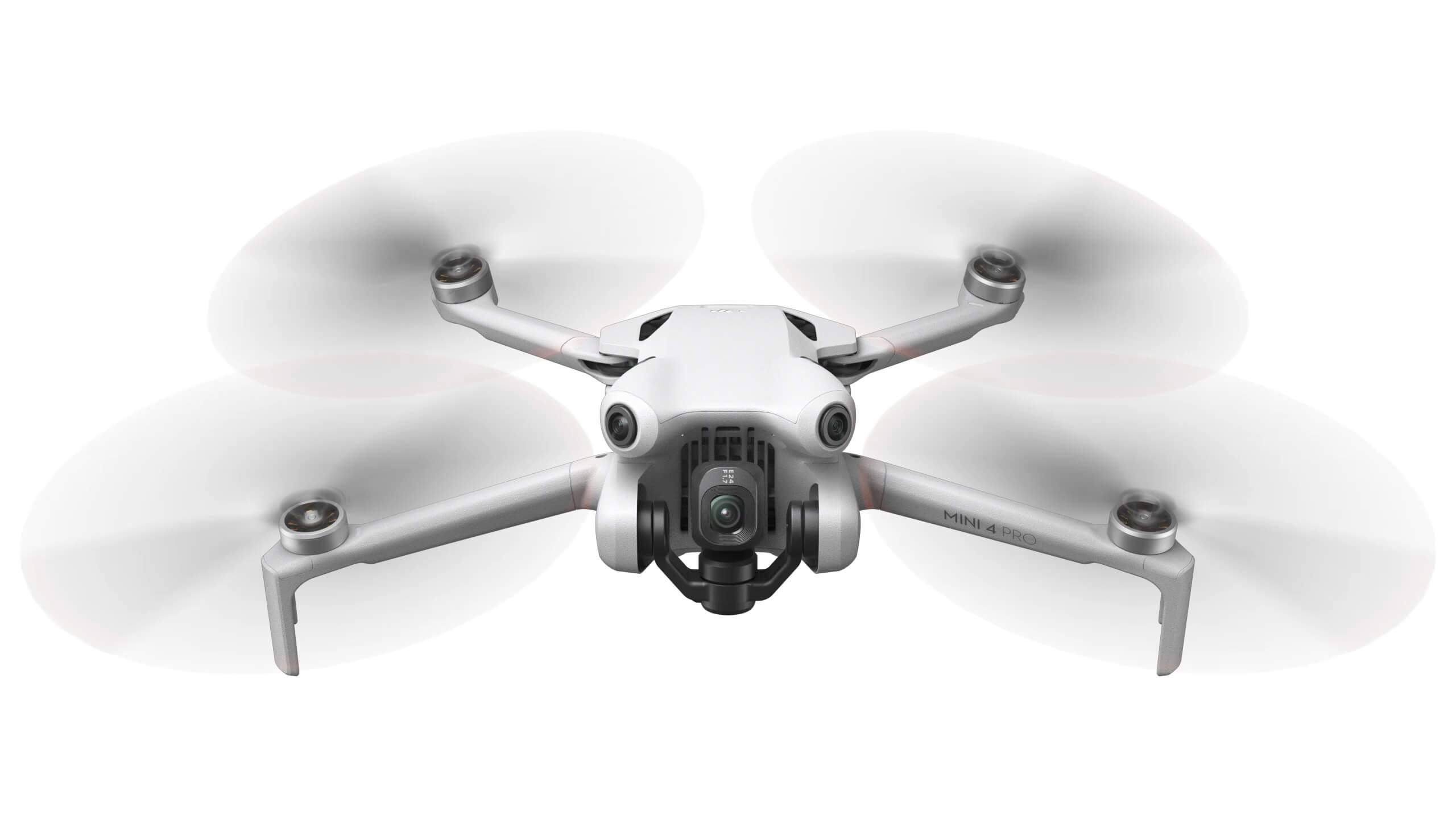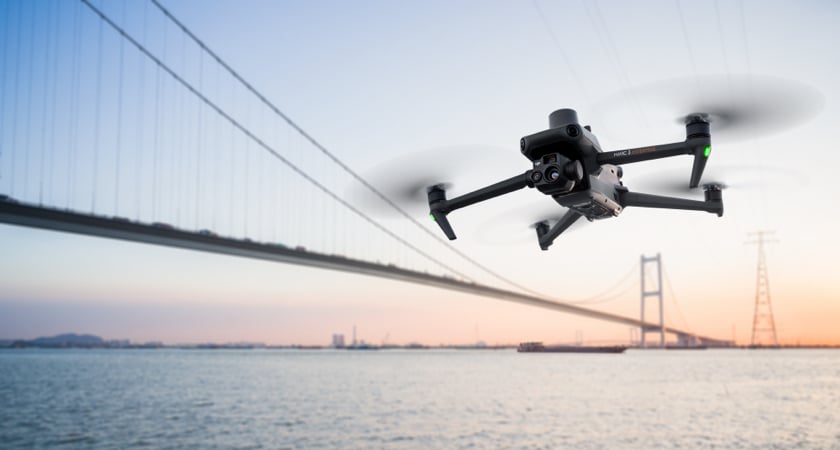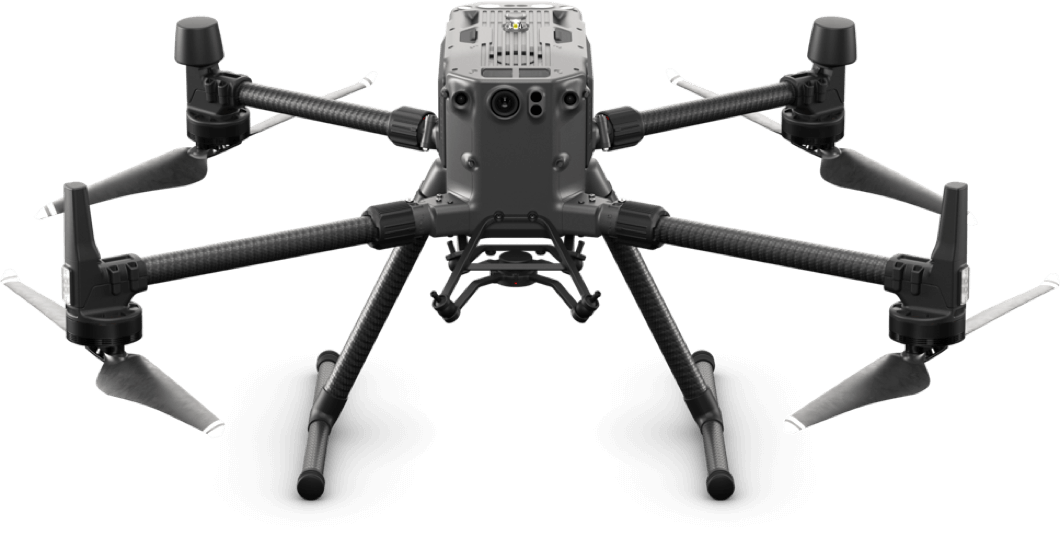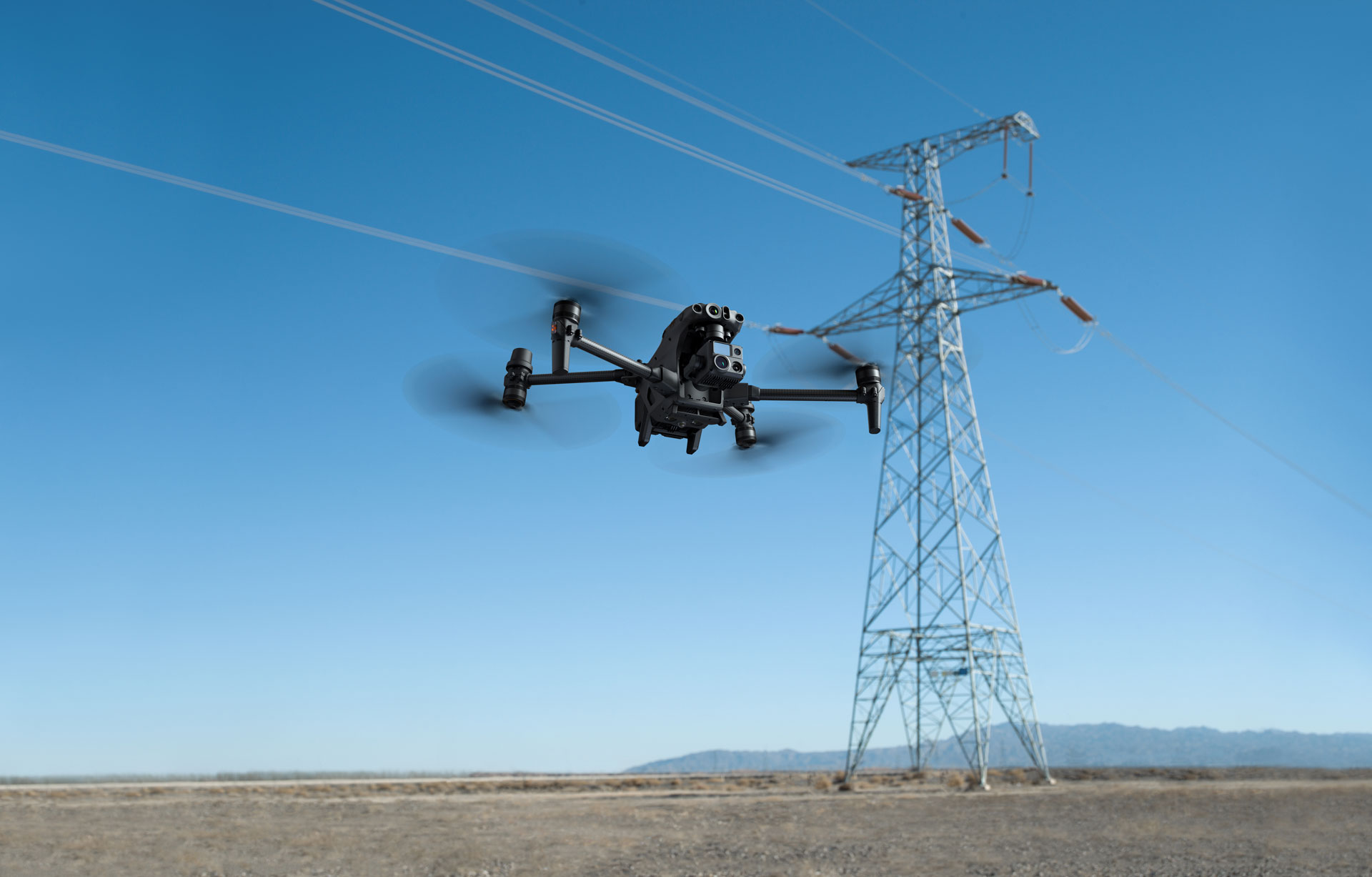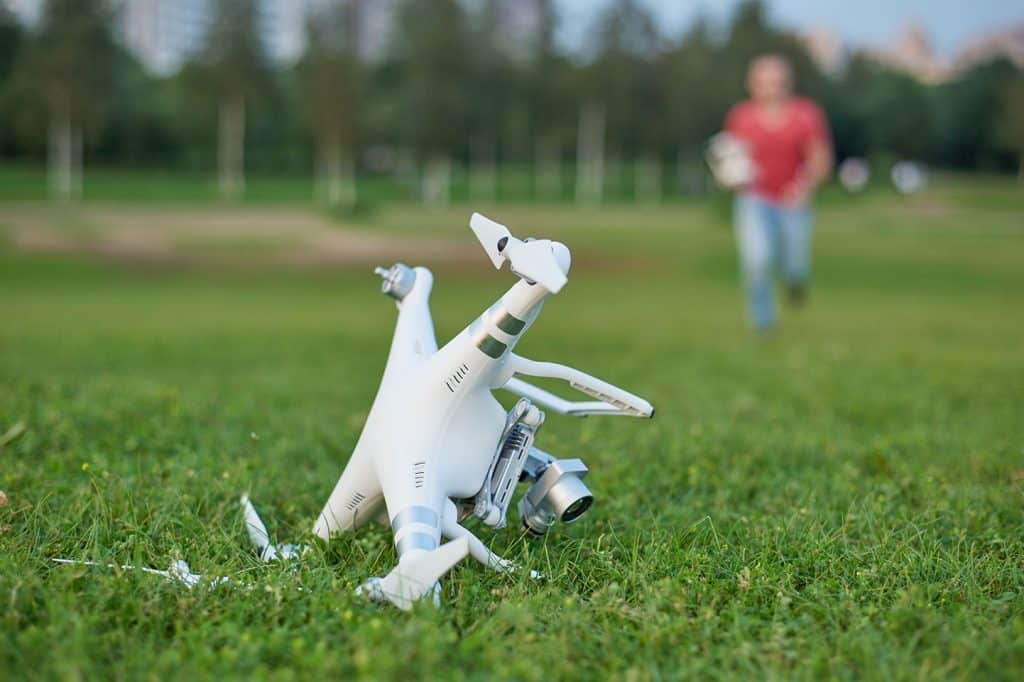In recent years, drone technology has revolutionised many industries, with the field of roof inspections being no exception.
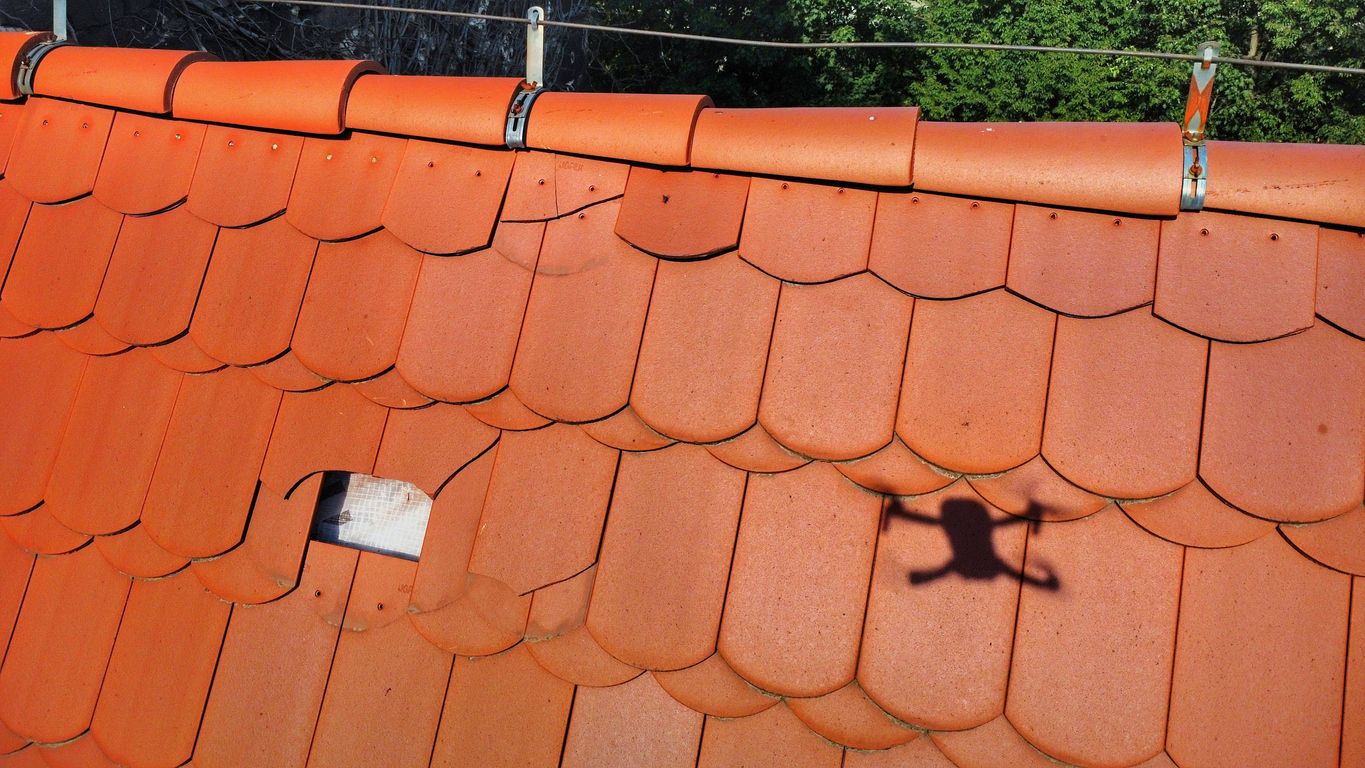
Traditionally, roof inspections required manual access, with inspectors using powered access equipment to assess conditions, or simply viewing the roof from the kerbside.
This method is not only time-consuming but also poses significant safety risks.
Drones, equipped with high-resolution cameras and various sensors, have ushered in a safer, more efficient, and more accurate way to perform these inspections.
This technology is now in high demand by roofing contractors, building surveyors, property managers, and even private individuals wanting to inspect their roofs.
With this comes the question of what is the best drone for roof inspections?
The answer can be somewhat defined by the rules and regs of whatever part of the world you live in.
Here in the UK, the DJI Mini series has emerged as the king of built-up area roof inspections.
Despite its diminutive proportions, it packs a punch with a decent camera, good flight time, and stable hovering.
How to Find the Best Drone for Roof Inspections
When selecting a drone for roof inspections, it’s crucial to consider several key features that determine its effectiveness and efficiency. Here are the essential features to look for:
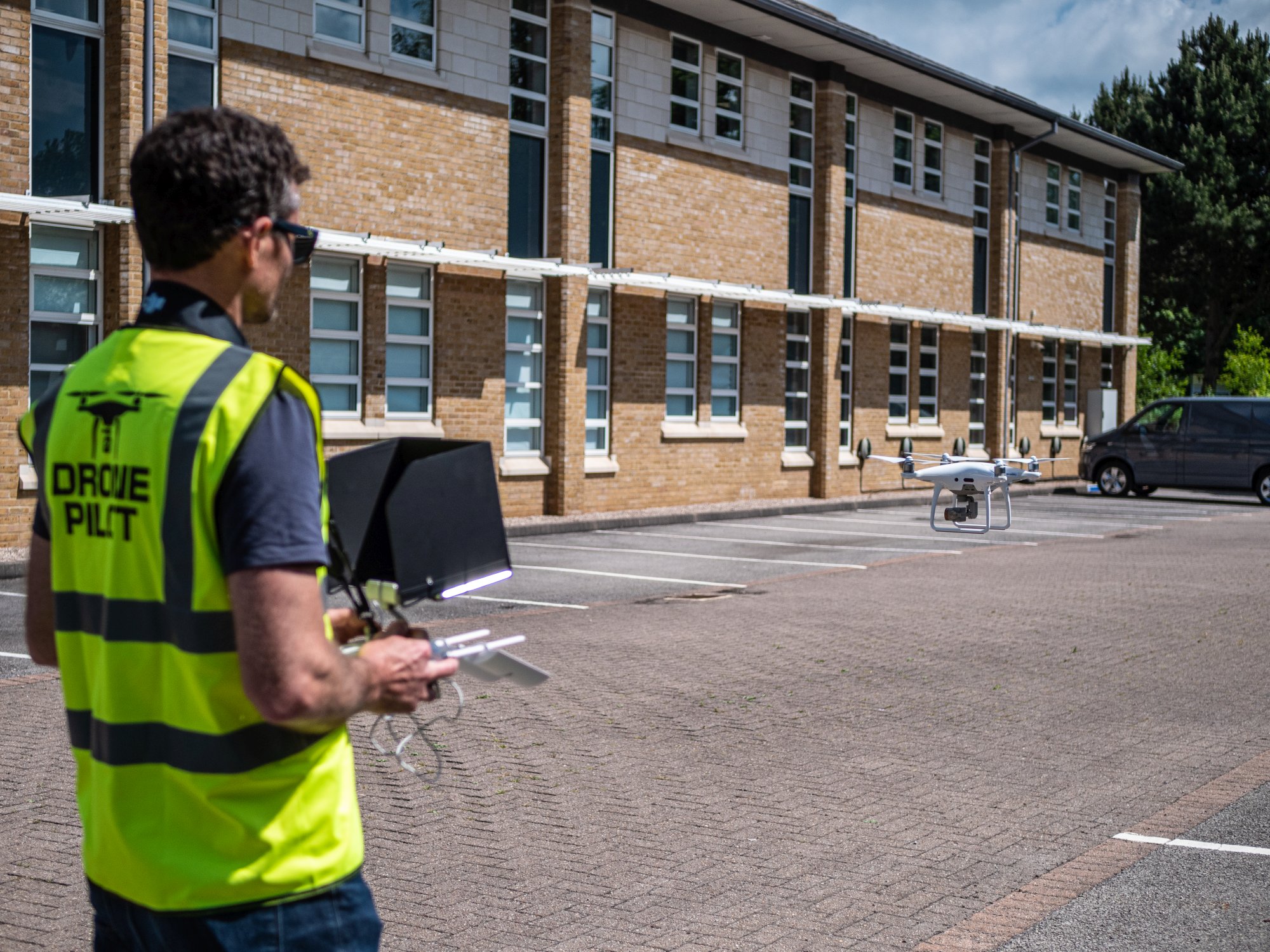
1. Camera Quality
High-Resolution Camera: The primary tool of any inspection drone is its camera. Look for drones equipped with high-resolution cameras that can capture detailed images and videos. A minimum photo resolution of 12MP is recommended, and aim for at least 1080p video resolution, although most drones these days offer 4k.
2. Stability and Flight Control
Stable Hovering and Precision Flight: A good inspection drone must be able to hover steadily and manoeuvre precisely, even in windy conditions. This stability ensures clear, blur-free images and safe operation near buildings.
Gimbal Stabilisation: A gimbal stabilises the camera, keeping it level despite the drone’s movements, crucial for capturing clear, consistent footage.
3. Battery Life and Range
Extended Battery Life: Longer battery life allows for uninterrupted inspections of larger areas. A drone with a battery life of at least 20-30 minutes is preferable.
Sufficient Range: Ensure the drone has a range that allows it to cover the entire roof area without the need for constant repositioning. Bear in mind the rules in the UK state you must maintain clear line of sight with your drone at all times.
4. Ease of Control
User-Friendly Interface: The drone should have an intuitive control system, making it easy for inspectors to operate, even with minimal training.
Automated Flight Modes: Features like waypoint navigation or automatic takeoff and landing can streamline the inspection process.
5. Special Features
Thermal Imaging: For advanced inspections, drones with thermal imaging cameras can detect issues like poor insulation, water leaks, or hidden damage that is not visible to the naked eye.
Obstacle Avoidance Systems: To prevent collisions during flight, especially in complex urban environments, an obstacle avoidance system is a valuable feature.
Zoom Lens: Some drones are equipped with zoom, or telephoto lenses, making detailed image acquisition easier.
RTK: RTK can help with the positioning of the drone, or with creating accurate maps and models of buildings.
6. Durability and Weather Resistance
Robust Build: The drone should be built to withstand light gusts of wind and even minor collisions, ensuring longevity and reliability.
7. Weight and size
Size matters, but in this case bigger is not always better. Most drone roof inspections are in built-up areas, making it difficult if not impossible to fly a drone over 250g legally. Smaller drones are easier to manouver in tight spaces, and will cause less damage in the result of a crash.
When choosing a drone for roof inspections, it’s important to balance these features with your specific needs and budget.
A well-equipped drone becomes an invaluable tool for efficient, safe, and accurate roof inspections.
Best Drone for Roof Inspections, with Specifications
1. DJI Phantom 4 Pro V2.0
Specifications: 20MP camera, 4K video, 30-minute flight time.
Obstacle avoidance: Forwards, backwards, downwards
Pros: High-resolution camera, stable flight, reliable obstacle avoidance.
Cons: Bulky non-folding design, aging platform
Suitable for: Professional-grade roof inspections requiring detailed imagery.
2. DJI Mavic Air 3
Specifications: 48MP* camera, 4K video at 60fps, 46-minute flight time
Obstacle avoidance: Forwards, backwards, upwards, downwards, Sides
Pros: Good balance of portability and camera quality, 3x medium telephoto lens
Cons: Although small, it doesn’t come under the magic 250g weight.
Suitable for: Frequent, varied condition inspections.
3. Autel Robotics EVO II
Specifications: 48MP* camera, 8K video capability, 40-minute flight time.
Obstacle avoidance: Forwards, backwards, upwards, downwards, Sides
Pros: Long flight time, high-resolution camera.
Cons: 8K video may be excessive for roof inspections.
Suitable for: Extended inspections requiring detailed imagery.
5. DJI Mini 3 Pro
Specifications: 48MP* camera, 4K video, 34-minute flight time.
Obstacle avoidance: Forwards, backwards, upwards, downwards, sides
Pros: Highly portable, good camera quality for its size.
Cons: Less suitable for windy conditions.
Suitable for: Inspections where portability and low weight are key.
5. DJI Mini 4 Pro
Specifications: 48MP*, 4K video, 34-minute flight time.
Obstacle avoidance: Forwards, backwards, upwards, downwards, sides
Pros: Enhanced camera capabilities in a compact form.
Cons: Limited battery life compared to larger models.
Suitable for: Inspections where portability and low weight are key.
6. DJI Mavic 3 Enterprise
Specifications: 20MP camera, 4K video, up to 45-minute flight time, thermal option available.
Obstacle avoidance: Forwards, backwards, upwards, downwards, sides
Pros: Advanced imaging and sensors, extended flight capabilities, optional RTK module
Cons: Higher price point
Suitable for: Comprehensive inspections requiring advanced features.
7. DJI M300 RTK
Specifications: Industrial-grade build, multiple payload options, up to 55-minute flight time, RTK (Real-Time Kinematic) for precise positioning.
Obstacle avoidance: Forwards, backwards, upwards, downwards, sides
Pros: Highly versatile, extremely stable, precise positioning for detailed inspections.
Cons: Higher cost, more complex to operate, massive size and weight.
Suitable for: High-end commercial, industrial, and infrastructure inspections where precision and versatility are critical.
8. DJI M30
Specifications: 12MP (wide), 48MP (zoom), up to 41-minute flight time.
Obstacle avoidance: Forwards, backwards, upwards, downwards, sides
Pros: Versatile camera options, portable design, good balance of functionality and ease of use.
Cons: High cost, fixed cameras.
Suitable for: A variety of inspection needs, particularly where portability and camera versatility are key.
*Most 48MP cameras on drones are not a true 48MP. They utilise Quad Bayer Sensors to multiply the actual resolution of the camera by four. There is some debate about whether this method is effective in providing a more detailed image.
Conclusion
This diverse lineup of drones offers a range of options to suit various roof inspection needs, from compact and agile models to advanced drones with extended capabilities. Consider the specific requirements of your inspection tasks to choose the most suitable drone.
Top Picks for Roof Inspections
Best Drone for Small & Portable Use:
DJI Mini 4 Pro
Best Drone for Professional Results:
DJI Mavic 3 Enterprise Series
Legal and Safety Considerations for Drone Roof Inspections
When using drones for commercial roof inspections, it’s crucial to navigate the legal landscape carefully.
Regulations can vary by country and even by region within countries, but there are common themes.
1. Licensing and Certification
Commercial Operation License: In many places, operating a drone for commercial purposes requires a specific license or certification. This ensures that the operator is trained and knowledgeable about drone laws and safety protocols.
Drone Registration: Drones used for commercial or recreational purposes often need to be registered with the relevant aviation authority, in the UK this is the CAA.
2. Airspace and Privacy Laws
Restricted Airspace: Operators must be aware of restricted airspace, such as near airports or military bases, and seek appropriate permissions if needed.
Privacy Concerns: Ensuring compliance with privacy laws is crucial, especially when flying over residential areas.
3. Insurance
Liability Insurance: Commercial drone operators should have liability insurance to cover potential damages or accidents during operations.
Adhering to legal requirements and prioritising safety are critical components of conducting drone roof inspections. By understanding and respecting these aspects, operators can ensure compliant, responsible, and safe drone usage, thereby enhancing the credibility and reliability of their service.
Why Use a Specialist Drone Roof Inspection Company?
1. Professional Expertise and Experience
Deep Understanding: Specialist companies have a profound knowledge of both drone technology and the intricacies of roof inspections. They understand how to navigate different roof types and the specific challenges each presents.
Accurate Interpretation: Their expertise extends to accurately interpreting drone-captured imagery.
They can identify subtle signs of damage or wear that might be overlooked by the untrained eye.
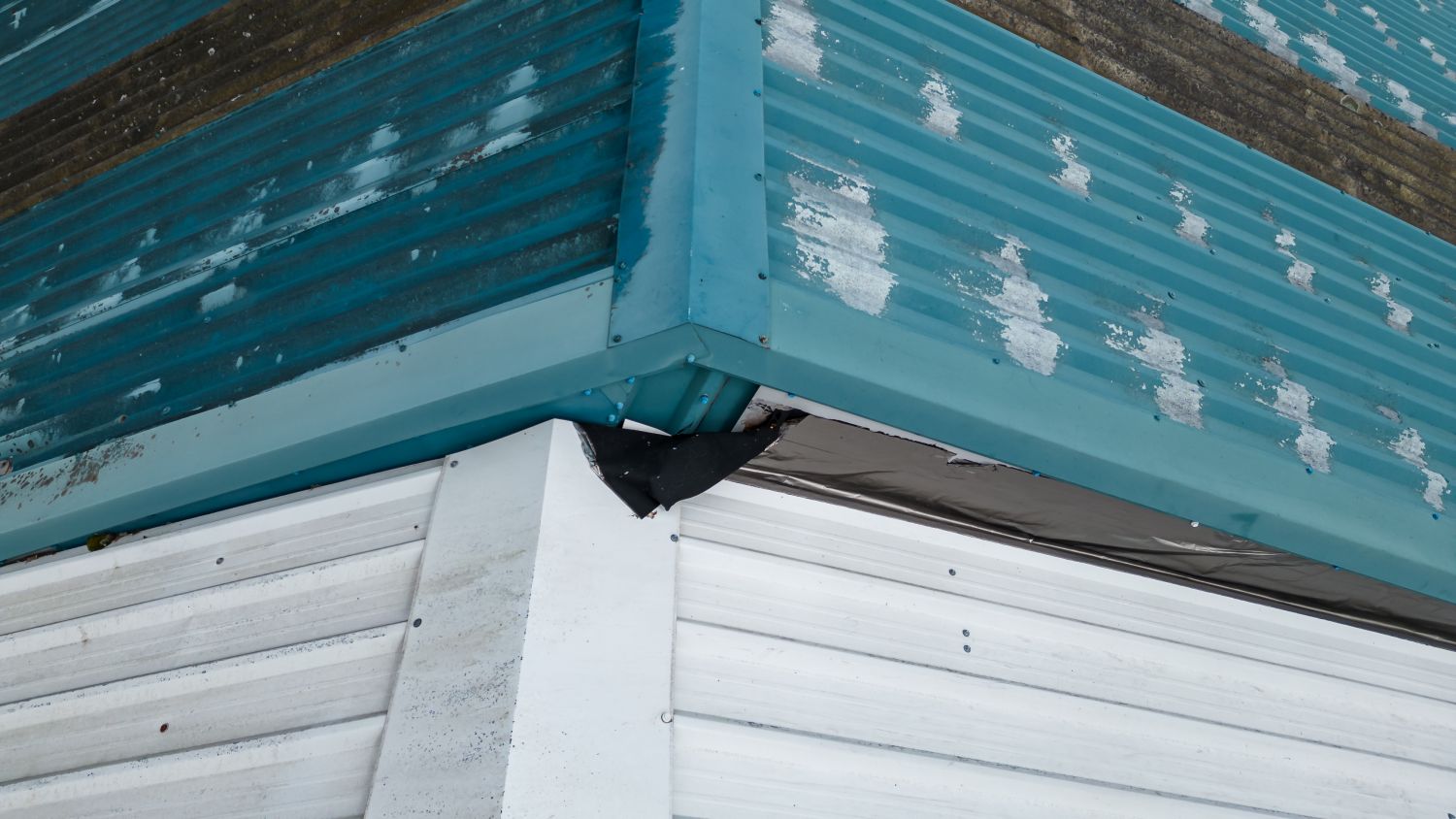
2. Access to Advanced Equipment
High-End Drones: These companies invest in the latest drone technology, equipped with advanced cameras and sensors.
Thermal Imaging: Many have drones with thermal imaging capabilities, essential for detecting hidden problems like water intrusion or insulation defects, which are not visible to the naked eye.
3. Compliance with Regulations
Knowledge of Laws: Specialist companies are well-versed in the legal aspects of drone operations, including local and national airspace regulations.
Legal Compliance: They ensure that all drone inspections are conducted within legal boundaries, which is particularly important for commercial properties and insurance claims.
4. Enhanced Safety
Trained Operators: Commercial drone operators are professionally trained to fly in various conditions safely.
5. Detailed and Accurate Reporting
Comprehensive Reports: Specialist companies deliver detailed reports that go beyond simple imagery.
They can include 3D modeling, in-depth analyses, and specific recommendations.
Data-Driven Decisions: This level of detail helps property owners and managers make well-informed decisions based on comprehensive data.
6. Cost-Effectiveness
Preventative Maintenance: Regular drone inspections can identify minor problems before they escalate into major ones, leading to savings.
Conclusion
As we have explored in this blog post, drone technology is significantly transforming the way roof inspections are conducted.
From enhanced safety and efficiency to high-quality imaging and advanced capabilities, drones offer a multitude of advantages over traditional inspection methods.
Whether you are a homeowner, property manager, real estate professional, or involved in building maintenance, consider the value that drone roof inspections can bring.
Adopting this technology can lead to safer, quicker, and more detailed inspections, ultimately saving time and money while providing peace of mind about the condition of your property.
For professionals in the field of roof inspections or drone operations, now is the time to invest in this technology and training.
We hope you have found our guide to the best drone for roof inspections helpful, please feel free to leave a comment or reach out if you have any questions.

